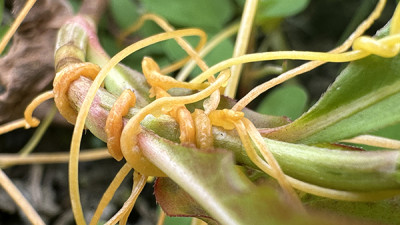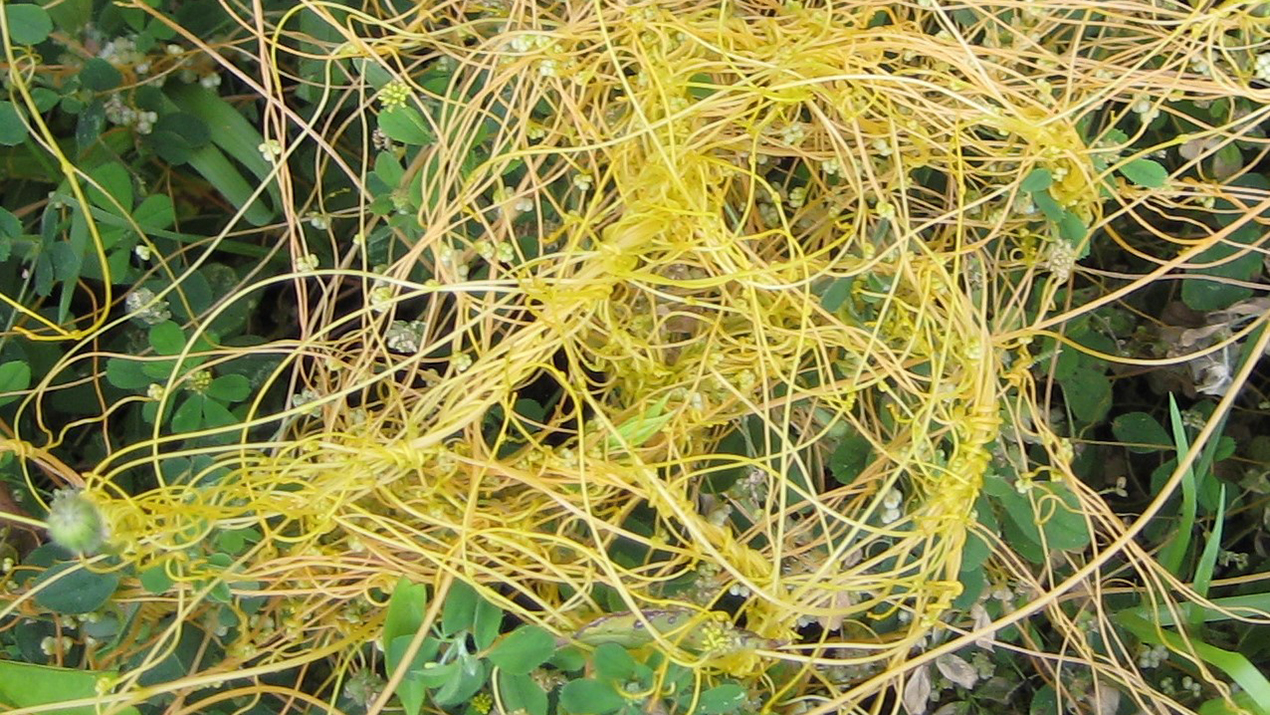| Management programme |
| Progressive containment |
| Objectives |
| Reduce the amount of golden dodder and limit the locations that have it within the Waikato region. |
| Impacts |
| Economic, biodiversity, amenity/recreation, animal welfare |
Golden dodder is a parasitic plant that sucks the nutrients out of its host plants, weakening and often killing them. It also smothers neighbouring plants with a mass of golden tendrils.

What does it look like?
Leafless, twining, parasitic herb that forms dense mats of growth over other plants. This species is usually short-lived, however, it can live for more than one year if it is attached to a long-lived host plant. Its twining and branching stems are pale yellow, greenish-yellow, golden yellow or orange in colour. They are hairless, thin (about 1mm thick) and thread-like in appearance. These parasitic stems have small suckers (called haustoria) which are used to penetrate the host plant's stems or leaves and extract nutrients.
Flowers
- Small flowers (2-4mm long) are cream to white in colour and slightly bell-shaped.
- Flowers have five sepals and five pointed petals which are partially fused together near the base.
- The petal lobes are bent outwards or downwards when fully open.
- They are borne in small dense clusters (up to 15mm across), containing about five flowers.
Where is it found?
Golden dodder is known to exist in a cluster of northern Waikato wetlands. This is concerning because it has recently spread to new wetland habitats and has the potential to continue its spread along access routes, stream banks, wetlands and waterways.
Why is it a pest?
- Golden dodder is toxic to stock and can reduce the growth of animal food such as clover.
- Cattle feeding in pasture within 2m of contaminated areas are at risk of consuming golden dodder.
- Cattle moving within 2m of contaminated areas also risk spreading golden dodder.
- It can smother wetland plants, including duck food.
How does it spread?
The risk of it spreading is high. Vehicles, equipment, clothing and cattle could transport plant fragments or seed to other areas in the Waikato or beyond.
How to prevent spread
Check for weed fragments and seeds on:
- dogs
- livestock
- boots
- boats
- clothes
- machinery
- gear.
Stock can spread this weed so keep them out of infested sites.
How do you get rid of it?
Golden dodder is exceedingly difficult to control. Please do not attempt to control it. Let us know if you think you have seen this plant or have it on your property by calling 0800 800 401 to report it to your local biosecurity pest plant officer.




